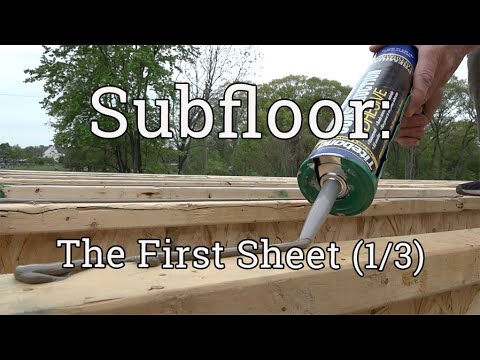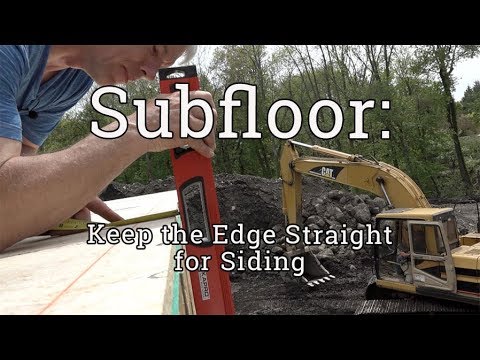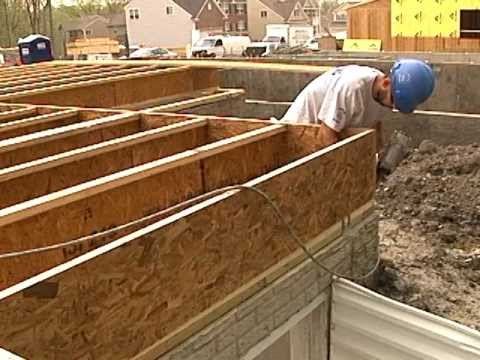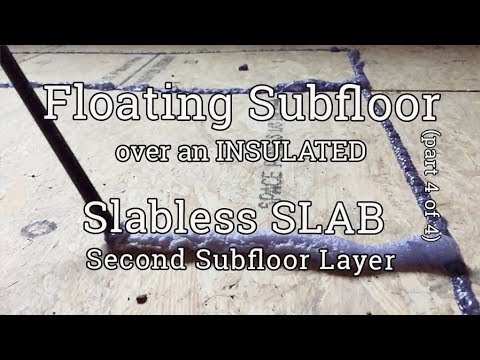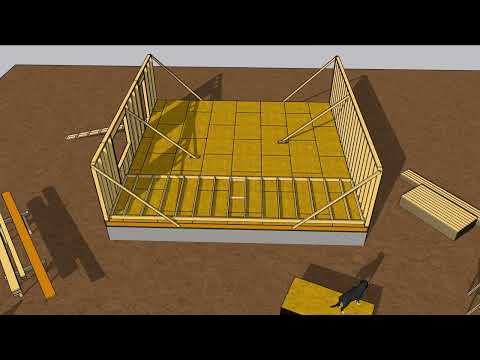Repetitive tasks with reasons behind them consolidate into a squeak-free subfloor installation
In the first video, we put the first sheet of the subfloor in precisely the right place. The subfloor sheet is glued down, so if it is wrong, the whole layout could go to heck on us right out of the gate.
Speaking of layout, before nailing the far side of the sheet, make sure the joists are spaced correctly and not bent off of their 16-inch layout.
David Joyce, builder: "I always think its very important to make sure all of your sixteens are on, but they are on this.
It’s very important also not to drive your nail too far.
I want it to be right there, just below the subfloor."
If David can’t feel the surface of the nail with his finger, he starts getting twitchy.
"It’s important that after you put the glue and subfloor down that you nail it. Because that glue will set up and then form a little space."
When nailing, use markings on the board, or establish a rhythm for correctly spacing the fasteners. Edges generally get more fasteners than the field but look it up in your code book or manufacturer's instructions
Glue up the next set of joists, and you’re ready to set the next sheet. Again, walk the corners into place and lay the sheets down without sliding them.
Tap the ends onto the line, and nail the sheet into place.
The adhesive is spread on the blocking, to prevent floor squeaks. Because the air barrier will be outside the wall sheathing, glue isn’t needed at the rim.
"In my opinion, the primary purpose of a subfloor adhesive is to prevent squeaks."
The first sheet of the second course is a four-footer, that way, the joints are staggered. The sheet is tapped into place with a block and a sledgehammer. This is why it's important to have the groove-side facing out. If you were bashing the tongue with a sledgehammer, it would never fit into any groove.
Calvin taps the end flush with the previous sheet, and he nails it off.
One tip on spreading subfloor glue: don't go past four-feet. One way to do that is to place your beater board at four feet and keep your bead back a couple of inches. It's good to hold it back for a couple of reasons. Most important, because if you don't, you will inevitably run your tape through the goop.
With the first course nailed down, you have a work surface so you can work from the tongue-edge of the sheet.
"When I’m laying the sheet down, I drop it with my foot on it."
Which pulls the tongue into the groove.
"We would like to have an eighth-inch gap between all of our sheets so that way they have room to shrink and expand. If you don't that can expand past each other and they'll bow up. This portion will get raised. So to keep it flat, we leave a gap."
Final adjustments are made in various ways, depending on what’s needed.
Other videos in this series:
- Subfloor Installation 1: Get the First Sheet Right
- Subfloor Installation 2: Gluing, Placing, and Nailing the Sheets
- Subfloor Installation 3 of 3: A Straight Edge for Siding
—This three-part video series was shot on a jobsite of David Joyce's, in Concord, MA. covering squeak-free subfloor installation. It does not include subfloor adhesive in the air barrier system. Because David will wrap the house with housewrap and two layers of rigid insulation, it allows David's crew not to glue the rim so that it can be adjusted after the subfloor is installed.
Leaving the rim joist unglued ensures a flat wall spanning the second floor that won't telegraph humps through the siding. On a first-floor subfloor installation, the rim can be glued as part of an air barrier strategy.
